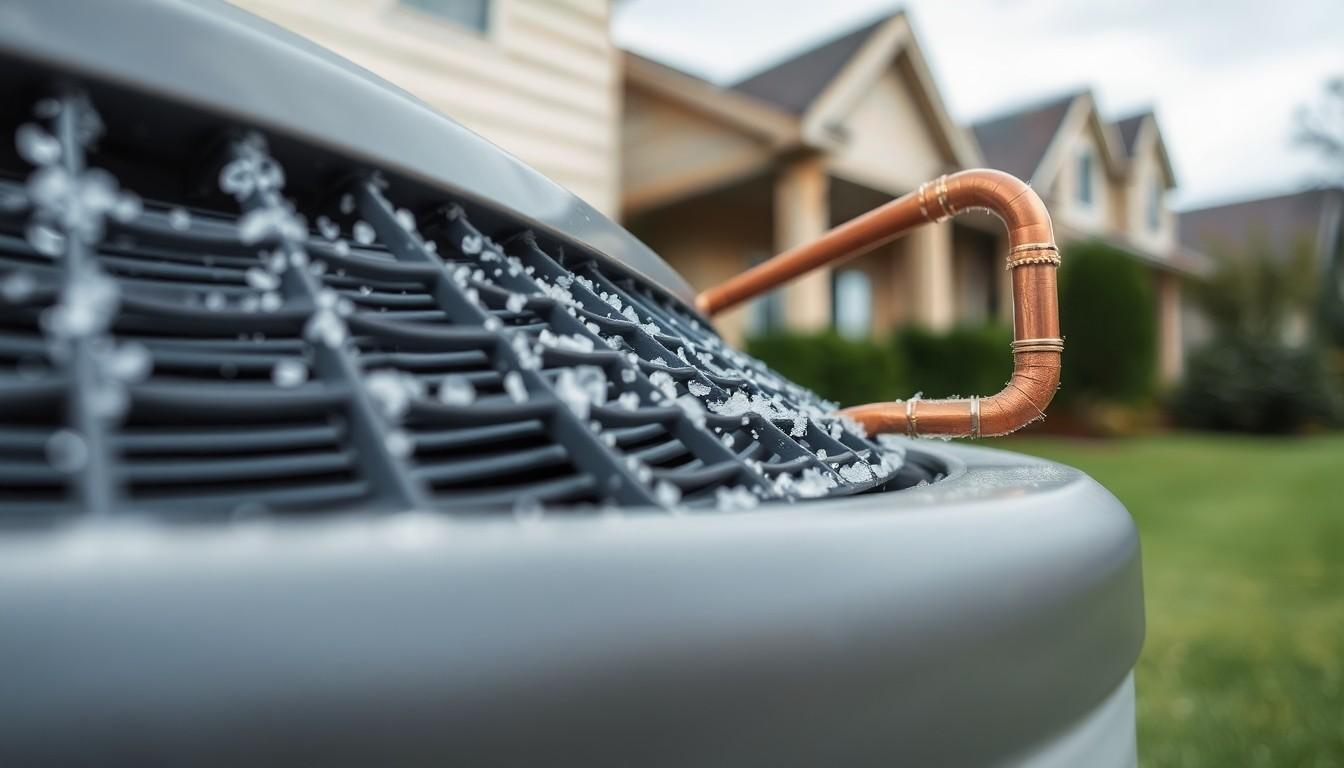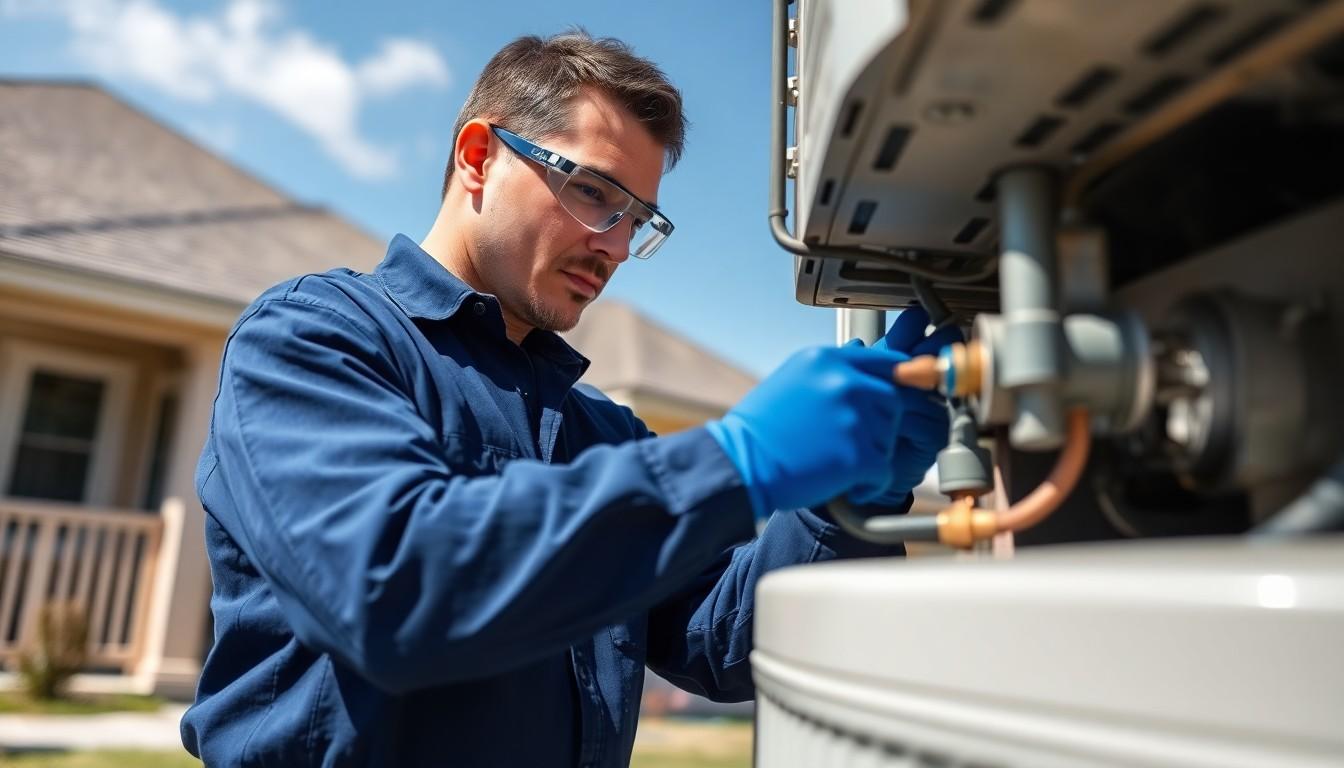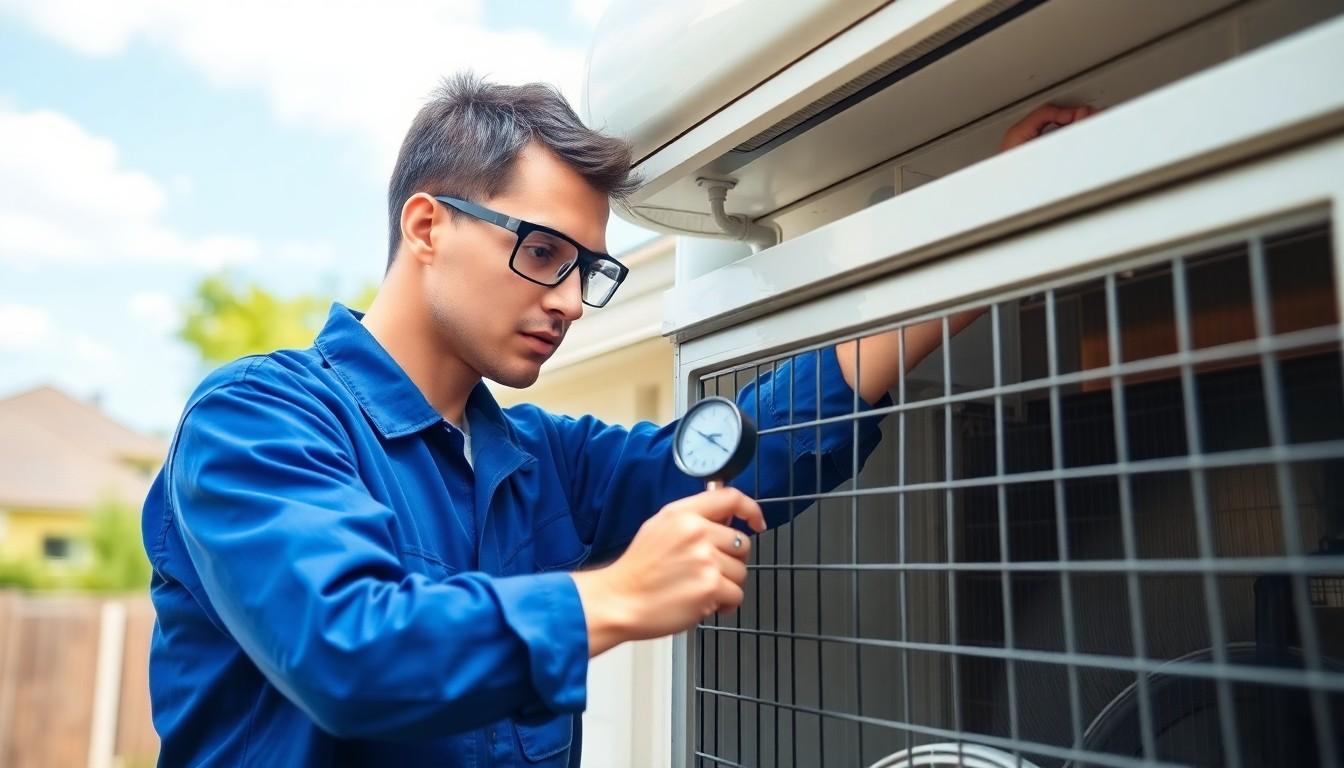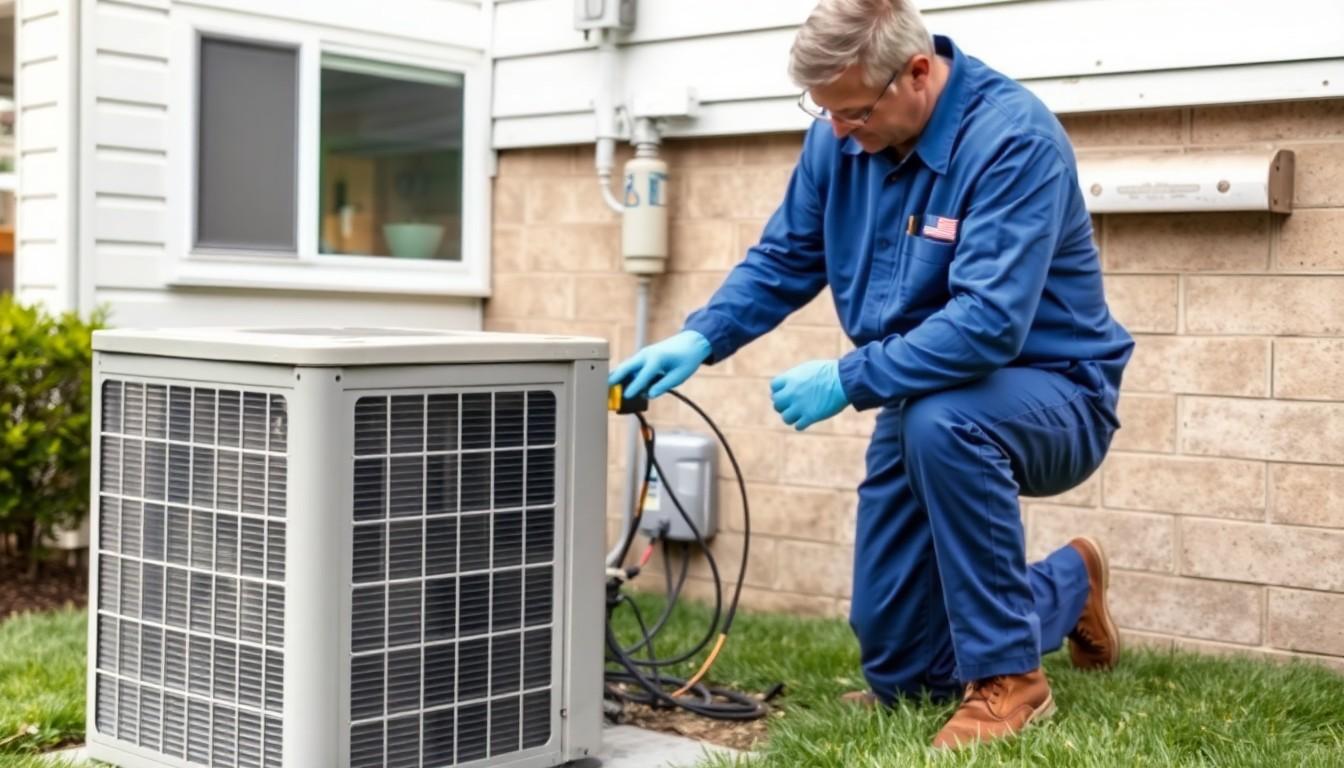Is your air conditioner struggling to keep your home cool? When summer temperatures soar, an AC that’s low on refrigerant (commonly known as Freon) can leave you sweating and uncomfortable. Recognizing the signs early can save you from complete system failure and costly repairs.
We’ve helped thousands of homeowners diagnose refrigerant issues before they become major problems. In this guide, we’ll share the telltale indicators that your air conditioner needs a refrigerant recharge – from decreased cooling performance to unusual noises and unexpected energy bill spikes. Understanding these warning signs will empower you to take prompt action and restore your home’s comfort.
Understanding Freon and Your Air Conditioning System
Freon (or refrigerant) serves as the lifeblood of air conditioning systems, enabling the cooling process that keeps homes comfortable during hot weather. Modern AC units use newer refrigerants like R-410A rather than the older, ozone-depleting R-22 Freon that’s being phased out due to environmental regulations. These refrigerants work by absorbing heat from indoor air and releasing it outside through a continuous cycle of compression and expansion.
Unlike fuel in a car, refrigerant doesn’t get “used up” during normal operation—it circulates continuously in a closed system. AC systems are designed to maintain the same level of refrigerant (known as the “charge”) throughout their operational life. When refrigerant levels drop, it’s almost always due to a leak somewhere in the system rather than normal consumption.
Refrigerant leaks occur in several common locations: damaged copper lines, corroded evaporator or condenser coils, faulty valves, or loose connections at service ports. These leaks not only reduce your system’s efficiency but can also cause component damage if left unaddressed. Environmental factors such as extreme weather, physical damage to outdoor units, and natural wear on components contribute to the development of these leaks over time.
Manufacturers design air conditioners to operate with a exact amount of refrigerant—neither too much nor too little ensures optimal performance. Undercharged systems struggle to cool effectively while overcharged units face increased pressure that can damage vital components. Regular professional maintenance helps identify potential leak points before they become serious problems that require extensive repairs.
Common Signs Your AC Needs Refrigerant

Recognizing when your air conditioner needs refrigerant is crucial for maintaining optimal cooling performance and preventing system damage. Here are four telltale indicators that your AC system might be low on refrigerant.
Reduced Cooling Performance
Insufficient cooling even though your air conditioner running constantly points to low refrigerant levels. Your AC system relies on refrigerant to absorb heat from indoor air, and when levels drop, cooling efficiency dramatically decreases. Vents blowing warm air instead of cool air serve as a clear warning sign that refrigerant may have leaked from your system, compromising its ability to cool your home effectively.
Unusual Sounds During Operation
Distinctive hissing or bubbling noises coming from refrigerant lines indicate potential leaks in your AC system. These sounds occur when refrigerant escapes through small holes or cracks in the lines or coils under pressure. Severe refrigerant issues can manifest as loud hissing accompanied by visible white clouds of expelled oil and residual refrigerant, particularly if the compressor fails due to related electrical problems.
Frozen Evaporator Coils
Ice or frost formation on copper lines or the evaporator coil signals inadequate refrigerant levels in your system. Low refrigerant causes the coil temperature to drop below freezing, leading to ice buildup that restricts airflow and puts additional strain on your air conditioner. Water pooling around your furnace or indoor unit often results from these frozen coils thawing out, as the melting ice creates excess condensation that drips from the system.
Higher Than Normal Energy Bills
Unexpected spikes in your electric bills frequently indicate your AC is struggling due to refrigerant issues. Systems with low refrigerant must run longer cycles and work harder to achieve desired temperatures, consuming significantly more electricity in the process. This increased energy usage directly translates to higher utility costs while still delivering subpar cooling performance throughout your home.
Testing Your Air Conditioner for Refrigerant Issues

Testing your air conditioner for refrigerant issues involves both simple DIY inspections and knowing when professional help is necessary. These methods can help you identify potential problems before they lead to system failure or costly repairs.
DIY Inspection Methods
Visual inspection provides the first clue to refrigerant problems. Check for ice or frost buildup on refrigerant lines or the evaporator coil, which often indicates low refrigerant levels due to improper heat absorption. Look around your unit for any water pooling, as this can signal refrigerant leakage affecting your system’s performance.
Air flow testing helps confirm cooling issues. Place your hand in front of vents to feel if the air coming out is warm instead of cool. Reduced air flow from vents often accompanies refrigerant problems, as the system struggles to maintain proper cooling capacity without sufficient refrigerant.
Noise detection can reveal hidden refrigerant leaks. Listen carefully for unusual hissing or bubbling sounds coming from the refrigerant lines, which typically indicate escaping refrigerant through small holes or cracks. These distinctive sounds become more noticeable during system operation and serve as a reliable indicator of potential leaks.
When to Call a Professional Technician
Complex issues beyond basic troubleshooting require professional expertise. Technicians possess specialized tools to accurately measure refrigerant levels and detect leaks that aren’t visible to the untrained eye. They’ll diagnose the underlying cause rather than just treating symptoms, ensuring proper repairs.
Safety concerns make professional handling of refrigerant issues essential. Refrigerants contain chemicals that can pose health risks if improperly handled, and EPA regulations restrict refrigerant handling to certified professionals. Licensed technicians follow proper protocols for refrigerant recovery, recycling, and recharging.
System maintenance from professionals extends your AC’s lifespan. Regular professional service includes comprehensive refrigerant level checks and system inspections that identify potential issues before major breakdowns occur. Technicians can spot early warning signs of component wear that might lead to refrigerant problems, saving you from expensive emergency repairs.
The Refrigerant Recharge Process Explained

The refrigerant recharge process requires professional expertise and specialized equipment to ensure safety and effectiveness. HVAC technicians follow a systematic approach to address refrigerant issues in your air conditioning system. Understanding this process helps homeowners know what to expect when their AC needs refrigerant service.
System Inspection and Diagnosis
Technicians begin with a comprehensive inspection of your air conditioning system to confirm if refrigerant levels are actually low. This initial assessment involves checking the pressure levels within the system using specialized gauges that measure both high and low-side pressure. Accurate diagnosis prevents unnecessary recharging when other issues might be causing similar symptoms.
Leak Detection and Repair
Finding and fixing refrigerant leaks forms a critical part of the recharge process. Technicians use various methods to locate leaks, including electronic leak detectors, UV dye tests, or nitrogen pressure tests. Common leak locations include connection points, damaged copper lines, and corroded evaporator or condenser coils. All leaks must be repaired before adding new refrigerant to prevent continued loss.
Refrigerant Evacuation and Recharge
After repairing any leaks, technicians often evacuate the remaining refrigerant from the system. They’ll then recharge your air conditioner with the appropriate type and precise amount of refrigerant specified by the manufacturer. Modern systems typically use R-410A refrigerant rather than older Freon varieties like R-22. The technician carefully measures the refrigerant charge to ensure optimal system performance.
System Testing and Verification
Technicians perform thorough testing following the recharge to verify the system operates correctly. This testing includes checking pressure levels, measuring temperature differentials across components, and ensuring proper airflow. Your AC should demonstrate improved cooling capacity and efficiency after a successful recharge. The technician might also make additional adjustments to optimize performance and efficiency.
Remember that refrigerant handling requires EPA certification due to environmental and safety concerns. Attempting to recharge an air conditioner without proper training and equipment can damage your system, void warranties, and violate environmental regulations. Professional refrigerant service typically costs between $150-$400 depending on the refrigerant type and amount needed.
Environmental Considerations and Modern Refrigerant Alternatives

The refrigerant industry has changed significantly due to environmental concerns, with R-22 (commonly called Freon) being phased out by the U.S. Environmental Protection Agency. This phase-out exists because R-22 contributes to ozone depletion and climate change, prompting regulations that have reduced its production and consumption. Homeowners with older systems should be aware that R-22 is becoming scarcer and more expensive as supplies dwindle.
Alternative Refrigerants
R-410A has emerged as a popular alternative to R-22 in modern air conditioning systems. Unlike its predecessor, R-410A doesn’t deplete the ozone layer and has a lower global warming potential, making it more environmentally responsible. HVAC manufacturers have redesigned systems to accommodate this refrigerant’s different pressure requirements and performance characteristics.
Newer options like R-32 and other hydrofluoroolefins (HFOs) represent the next generation of cooling answers. These advanced refrigerants boast even lower global warming potential than R-410A, addressing ongoing climate concerns. Many new air conditioning units now come equipped with these environmentally friendlier alternatives, reflecting the industry’s shift toward sustainability.
When dealing with refrigerant issues, consulting certified HVAC technicians ensures proper handling and compliance with environmental regulations. Technicians possess the training to safely manage different refrigerant types while following EPA guidelines. Professional assistance becomes particularly important if you own an older system that might use phased-out refrigerants, as proper handling prevents harmful releases into the atmosphere.
Preventive Maintenance to Avoid Refrigerant Problems

Regular maintenance prevents most refrigerant issues before they develop into costly repairs. Scheduling annual inspections with professional HVAC technicians ensures your system maintains proper refrigerant levels and optimal performance. These routine checks help identify potential leaks early when they’re easier and less expensive to fix.
Keep Air Filters Clean
Dirty air filters restrict airflow and force your air conditioning system to work harder, which can exacerbate refrigerant problems. Replacing or cleaning filters every 1-3 months improves system efficiency and reduces strain on components. Clean filters also prevent dust accumulation on internal components that could lead to freezing or overheating.
Monitor Refrigerant Lines
Visual inspections of refrigerant lines can detect early signs of trouble. Check copper lines monthly for any ice buildup, corrosion, or oil stains that might indicate leaks. Insulation on these lines should remain intact to prevent unnecessary temperature fluctuations that could affect refrigerant pressure.
Track System Performance
Documenting your air conditioner’s cooling performance helps identify gradual changes that might signal refrigerant issues. Note how quickly your home reaches the desired temperature and whether cooling seems consistent throughout all rooms. Unexplained changes in performance often precede more noticeable symptoms of refrigerant problems.
Protect Outdoor Components
Keeping the area around your outdoor condenser unit clean and clear improves airflow and system efficiency. Trim vegetation at least 2 feet away from all sides of the unit and remove debris like leaves, grass clippings, and dirt that can impede air circulation. Proper airflow reduces the system’s workload and helps maintain appropriate refrigerant pressure levels.
Address Minor Issues Promptly
Small problems often escalate into major refrigerant leaks when ignored. Unusual noises, reduced cooling capacity, or slight increases in energy bills warrant immediate attention. Prompt repairs of minor issues often prevent refrigerant leaks and extend your system’s lifespan significantly.
Conclusion
Recognizing the signs of low refrigerant in your AC system is crucial for maintaining comfort efficiency and avoiding costly repairs. By watching for reduced cooling hissing sounds frozen coils and rising energy bills you’ll catch potential problems early.
While simple visual inspections can help identify issues remember that refrigerant handling requires professional expertise. EPA-certified technicians have the proper equipment to safely diagnose leaks recharge the system and ensure environmental compliance.
Regular maintenance remains your best defense against refrigerant problems. We recommend scheduling annual professional inspections to keep your system running optimally. This proactive approach not only extends your AC’s lifespan but also helps you stay cool when temperatures rise.
Frequently Asked Questions
How do I know if my air conditioner is low on refrigerant?
Look for four key signs: reduced cooling performance (warm air from vents), unusual hissing or bubbling sounds, ice formation on evaporator coils, and unexpectedly high energy bills. If your AC isn’t cooling properly despite being on full blast, or if you notice any of these symptoms, you likely have a refrigerant issue that requires professional attention.
Does refrigerant get used up like fuel in a car?
No, refrigerant doesn’t get “used up” during normal operation. Unlike fuel, it circulates continuously in a closed system. If your refrigerant level is low, it means there’s a leak somewhere in your system. Common leak locations include damaged copper lines, connection points, or corroded evaporator or condenser coils.
Can I add refrigerant to my air conditioner myself?
No, you should not attempt to add refrigerant yourself. Handling refrigerant requires EPA certification, specialized equipment, and technical expertise. DIY refrigerant charging can damage your system, violate regulations, and pose safety hazards. Always hire a certified HVAC technician who can properly detect leaks, repair them, and recharge the system correctly.
How much does it cost to recharge an air conditioner with refrigerant?
Professional refrigerant service typically costs between $150-$400, depending on the refrigerant type, amount needed, and whether leak repairs are required. R-22 (Freon) is significantly more expensive than newer refrigerants like R-410A because it’s being phased out. Remember that simply adding refrigerant without fixing leaks is only a temporary solution.
What type of refrigerant does my air conditioner use?
Modern AC units typically use R-410A (Puron), while systems manufactured before 2010 may use R-22 (Freon). You can determine your refrigerant type by checking the manufacturer’s label on your outdoor unit or consulting your owner’s manual. As R-22 is being phased out due to environmental concerns, replacement options may need to be considered for older systems.
How often should refrigerant be checked or replaced?
Refrigerant doesn’t require regular replacement unless there’s a leak. During annual maintenance, a technician should check refrigerant pressure to ensure proper levels. If your system is properly sealed and functioning correctly, the same refrigerant should last the entire lifespan of your air conditioner, which is typically 10-15 years.
What causes air conditioner refrigerant leaks?
Common causes include vibration-induced wear on copper lines, factory defects in components, corrosion of coils from environmental factors, damage to outdoor units from lawn equipment or debris, and deterioration of connection points and seals over time. Regular maintenance can help identify potential leak points before they become significant problems.
Is refrigerant dangerous to my health or the environment?
Yes, refrigerants can pose health and environmental risks. Direct exposure can cause frostbite, respiratory issues, and in extreme cases, asphyxiation. Environmentally, older refrigerants like R-22 deplete the ozone layer and contribute to climate change. Newer alternatives have reduced environmental impacts, but proper handling by certified professionals is still essential to prevent accidental release.
What preventive maintenance can help avoid refrigerant problems?
Schedule annual professional inspections, keep air filters clean, visually check refrigerant lines for damage, monitor system performance, protect outdoor units from debris and damage, and address minor issues promptly. Preventive maintenance helps identify potential leaks before they become serious, ensuring your system operates efficiently and has a longer lifespan.
If my AC uses R-22 refrigerant, should I replace my system?
While not immediately necessary, replacement is worth considering. R-22 is being phased out, making it increasingly expensive and difficult to obtain. If your R-22 system needs significant repairs or refrigerant recharging, it may be more cost-effective long-term to upgrade to a newer, more efficient system using environmentally friendly refrigerants like R-410A.















